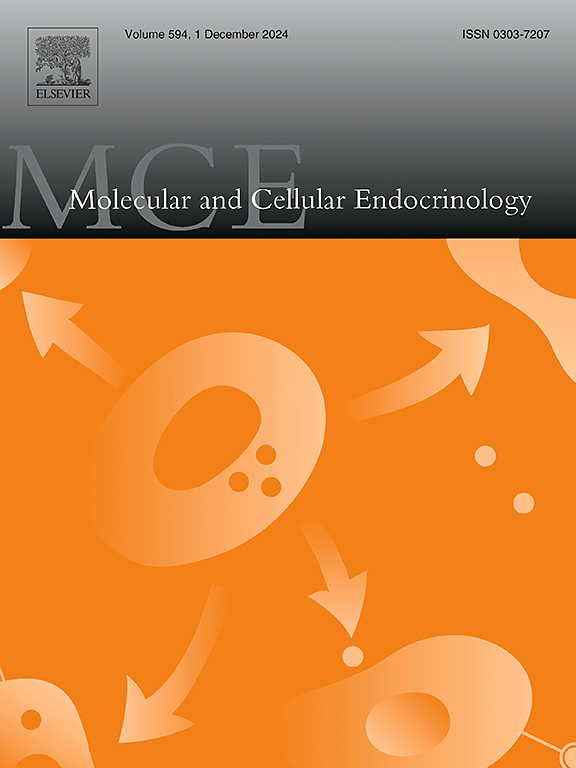Perinatal exposure to BPA leads to pronounced prostatic morphophysiological disorders in a rodent model of induced hyperplasia
IF 3.6
3区 医学
Q2 CELL BIOLOGY
引用次数: 0
Abstract
Bisphenol A (BPA) is a ubiquitous endocrine disruptor potentially harmful to male reproductive health. We aimed to investigate the impacts of perinatal exposure to a historically relevant and realistic dose of BPA on the ventral prostate under normal conditions and with prostatic hyperplasia in Mongolian gerbils (Meriones unguiculatus). Females were exposed to BPA (50 μg/kg/day) during gestation and lactation. The F1 male offspring were maintained until adulthood and subsequently treated with testosterone to induce prostatic hyperplasia. Morphological, molecular, and hormonal parameters were assessed on the ventral prostate. Testosterone-supplemented gerbils showed increased epithelium height and smooth muscle layer thickness. In the context of hyperplasia, perinatal exposure to BPA led to the onset of severe histopathologies (e.g., prostatic intraepithelial neoplasia, adenocarcinoma, and microacini), associated with increased cell proliferation. Perinatal BPA-exposed gerbils with prostatic hyperplasia showed increased pro-inflammatory markers (e.g., IL-6, COX-2, and F4/80), followed by a reduction in IL-10 protein levels. Regarding the steroid receptors, gerbils from this group presented a decrease in AR, followed by an increase in epithelial ERα expression. Molecularly, ERβ protein levels were higher in the prostate of perinatally exposed to BPA or testosterone-supplemented gerbils. Moreover, serum testosterone and estradiol levels increased after testosterone supplementation, whereas the T/E2 ratio increased in gerbils exposed to both treatments. Overall, the current study presents novel and comprehensive data on the life-long morphophysiological disorders caused by perinatal exposure to BPA on the ventral prostate of gerbils, highlighting the pronounced impacts observed in the context of hyperplasia.

围产期暴露于双酚a导致明显的前列腺形态生理障碍的啮齿动物模型诱导增生。
双酚A (BPA)是一种普遍存在的内分泌干扰物,对男性生殖健康有潜在危害。我们的目的是研究围产期暴露于历史相关和现实剂量的双酚a对正常条件下蒙古沙鼠腹侧前列腺和前列腺增生的影响。雌性在妊娠和哺乳期暴露于BPA (50 μg/kg/d)。F1雄性后代一直维持到成年,随后用睾酮治疗以诱导前列腺增生。对腹侧前列腺进行形态学、分子和激素参数的评估。补充睾酮后,沙鼠的上皮高度和平滑肌层厚度均增加。在增生的情况下,围产期暴露于BPA会导致与细胞增殖增加相关的严重组织病理学(如前列腺上皮内瘤变、腺癌和微腺泡)的发生。围产期bpa暴露的前列腺增生沙鼠显示出促炎标志物(如IL-6、COX-2和F4/80)增加,随后IL-10蛋白水平降低。对于类固醇受体,这组沙鼠的AR降低,随后上皮ERα表达增加。从分子上看,围产期暴露于BPA或补充睾酮的沙鼠的前列腺中ERβ蛋白水平较高。此外,睾酮补充后,沙鼠血清睾酮和雌二醇水平升高,而T/E2比值在两种治疗下均升高。总的来说,本研究提供了关于围产期BPA暴露对沙鼠腹侧前列腺终身形态生理障碍的新颖而全面的数据,强调了在增生背景下观察到的显著影响。
本文章由计算机程序翻译,如有差异,请以英文原文为准。
求助全文
约1分钟内获得全文
求助全文
来源期刊

Molecular and Cellular Endocrinology
医学-内分泌学与代谢
CiteScore
9.00
自引率
2.40%
发文量
174
审稿时长
42 days
期刊介绍:
Molecular and Cellular Endocrinology was established in 1974 to meet the demand for integrated publication on all aspects related to the genetic and biochemical effects, synthesis and secretions of extracellular signals (hormones, neurotransmitters, etc.) and to the understanding of cellular regulatory mechanisms involved in hormonal control.
 求助内容:
求助内容: 应助结果提醒方式:
应助结果提醒方式:


